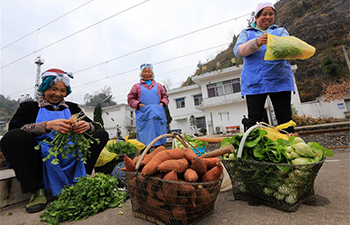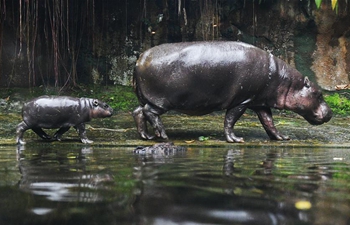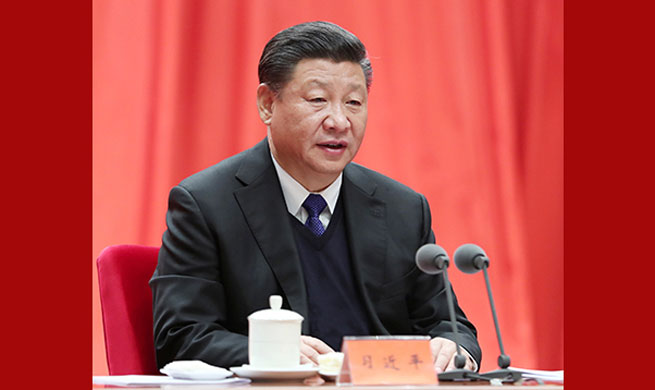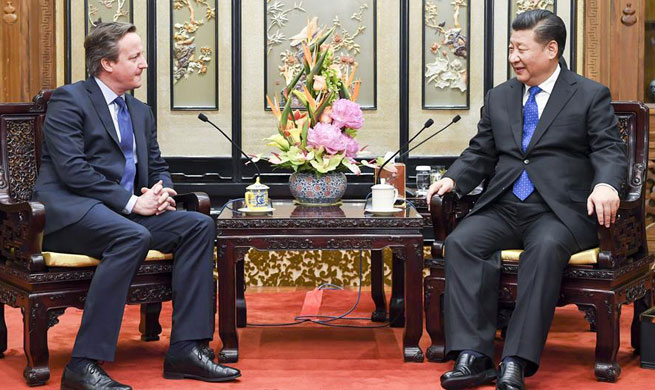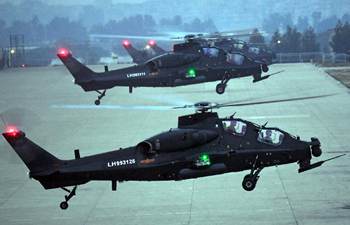URUMQI, Jan. 12 (Xinhua) -- Zhu Yuntao is considering raising the price of the mutton slices at his hotpot restaurant in northwest China's Ningxia Hui Autonomous Region.
"The price of mutton, a main ingredient in hotpot, has risen sharply," Zhu said. "If I don't raise the price, my profits will inevitably fall."
China is witnessing a rise in the price of mutton and related products. According to the Ministry of Agriculture, by the end of 2017, the average price of mutton at wholesale agricultural product markets was 52 yuan (8 U.S. dollars) per kilo, almost 6 yuan higher than the same period of 2016.
In theories of traditional Chinese medicine, mutton has the effect of boosting male potency and keeping the human body warm in cold weather, making it a favorite food in autumn and winter in China, particularly in the cold northern areas.
In places like Ningxia, Inner Mongolia and Xinjiang, mutton has seen prices surge.
According to statistics from Ningxia's regional government, the price of mutton rose from 44 yuan per kilo in October to the current 52 yuan per kilo, the highest since 2015. In Xinjiang, the average mutton price rose from 49 yuan per kilo in early 2017 to the current 54 yuan per kilo.
The market is already feeling the pinch.
"Mongolian people are used to eating mutton, but now one sheep can cost more than 1,500 yuan, which is putting too much pressure on low-income workers like us," said Su He, a migrant worker in Hohhot, capital of Inner Mongolia.
Experts attributed the price hike to recent tight supply and high demand.
"In the past three years, mutton prices were quite low, forcing many small sheep farmers out of the market," said Wang Yujiang of the local meat association in Urumqi, Xinjiang's regional capital. "This has resulted in a significant decrease in mutton production."
The outbreak of peste des petits ruminants, a sheep plague, since 2013 has also hurt those who raise sheep, said Yu Guangjun, with the Inner Mongolia Academy of Social Sciences. "Many farmers suffered losses and some quit the market," he said.
Severe consecutive droughts in Inner Mongolia, the main area for sheep production, have greatly increased feeding costs and led to the decline of both farmers and sheep, Yu said.
Mass slaughtering of ewes when farmers drop out of the market has further exacerbated the situation, according to Zhang Wanying, deputy director of Bayannur City agricultural and animal husbandry bureau in Inner Mongolia. The number of ewes in Bayannur, a large mutton production and processing base, has dropped by almost 15 percent since 2014, he said.
The price hike, however, has brought benefits for those still in the industry.
The purchasing price of mutton has increased by 10 yuan per kilo in Ningxia's Yanchi County, according to Cao Jun, director of agricultural and animal husbandry bureau in Yanchi. "One sheep can fetch 175 yuan more now," Cao said.
Price fluctuations for mutton may hurt the stable development of the market, said Qin Yong, head of a sheep breeding association in Bayannur.
"Authorities should keep a close eye on the industry now to avoid blind expansion and production overcapacity," Qin said.
Authorities can put reserve mutton on the market to cool the price surge when necessary to ensure that low income groups can afford the meat.




